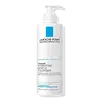What's inside
What's inside
 Key Ingredients
Key Ingredients

 Benefits
Benefits

 Concerns
Concerns

 Ingredients Side-by-side
Ingredients Side-by-side

Camellia Sinensis Leaf Extract
AntimicrobialCarthamus Tinctorius Seed Oil
MaskingCamellia Oleifera Seed Oil
Skin ConditioningDecyl Glucoside
CleansingLauryl Glucoside
CleansingEmulsifying Wax Nf
Rosa Damascena Callus
AntimicrobialPolyacrylate Crosspolymer-6
Emulsion StabilisingOenothera Biennis Oil
EmollientPunica Granatum Seed Oil
EmollientCaprylyl Glycol
EmollientEthyl Ether
SolventEthylhexylglycerin
Skin ConditioningTocopherol
AntioxidantCamellia Sinensis Extract
AntioxidantCitrus Nobilis Oil
MaskingHibiscus Sabdariffa Flower Extract
Skin ConditioningCitric Acid
BufferingCamellia Sinensis Leaf Extract, Carthamus Tinctorius Seed Oil, Camellia Oleifera Seed Oil, Decyl Glucoside, Lauryl Glucoside, Emulsifying Wax Nf, Rosa Damascena Callus, Polyacrylate Crosspolymer-6, Oenothera Biennis Oil, Punica Granatum Seed Oil, Caprylyl Glycol, Ethyl Ether, Ethylhexylglycerin, Tocopherol, Camellia Sinensis Extract, Citrus Nobilis Oil, Hibiscus Sabdariffa Flower Extract, Citric Acid
 Reviews
Reviews

Alternatives
Ingredients Explained
These ingredients are found in both products.
Ingredients higher up in an ingredient list are typically present in a larger amount.
Caprylyl Glycol is a humectant and emollient, meaning it attracts and preserves moisture.
It is a common ingredient in many products, especially those designed to hydrate skin. The primary benefits are retaining moisture, skin softening, and promoting a healthy skin barrier.
Though Caprylyl Glycol is an alcohol derived from fatty acids, it is not the kind that can dry out skin.
This ingredient is also used as a preservative to extend the life of products. It has slight antimicrobial properties.
Learn more about Caprylyl GlycolTocopherol (also known as Vitamin E) is a common antioxidant used to help protect the skin from free-radicals and strengthen the skin barrier. It's also fat soluble - this means our skin is great at absorbing it.
Vitamin E also helps keep your natural skin lipids healthy. Your lipid skin barrier naturally consists of lipids, ceramides, and fatty acids. Vitamin E offers extra protection for your skin’s lipid barrier, keeping your skin healthy and nourished.
Another benefit is a bit of UV protection. Vitamin E helps reduce the damage caused by UVB rays. (It should not replace your sunscreen). Combining it with Vitamin C can decrease sunburned cells and hyperpigmentation after UV exposure.
You might have noticed Vitamin E + C often paired together. This is because it is great at stabilizing Vitamin C. Using the two together helps increase the effectiveness of both ingredients.
There are often claims that Vitamin E can reduce/prevent scarring, but these claims haven't been confirmed by scientific research.
Learn more about Tocopherol